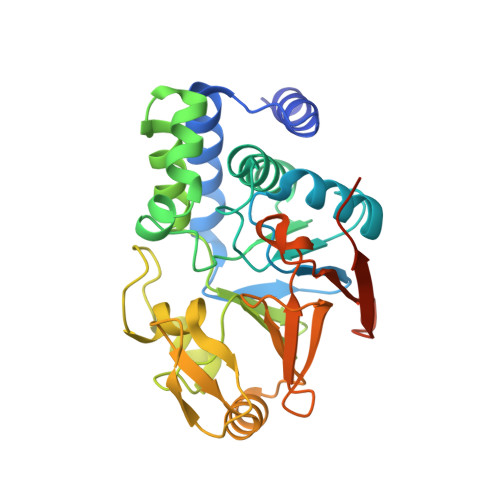A structural basis for the reduced toxicity of dinophysistoxin-2.
Huhn, J., Jeffrey, P.D., Larsen, K., Rundberget, T., Rise, F., Cox, N.R., Arcus, V., Shi, Y., Miles, C.O.(2009) Chem Res Toxicol 22: 1782-1786
- PubMed: 19916524
- DOI: https://doi.org/10.1021/tx9001622
- Primary Citation of Related Structures:
3K7V, 3K7W - PubMed Abstract:
Okadaic acid (OA), dinophysistoxin-1 (DTX-1), and dinophysistoxin-2 (DTX-2) are algal toxins that can accumulate in shellfish and cause diarrhetic shellfish poisoning. Recent studies indicate that DTX-2 is about half as toxic and has about half the affinity for protein phosphatase 2A (PP2A) as OA. NMR structural studies showed that DTX-1 possessed an equatorial 35-methyl group but that DTX-2 had an axial 35-methyl group. Molecular modeling studies indicated that an axial 35-methyl could exhibit unfavorable interactions in the PP2A binding site, and this has been proposed as the reason for the reduced toxicity of DTX-2. Statistical analyses of published data indicate that the affinity of PP2A for DTX-1 is 1.6-fold higher, and for DTX-2 is 2-fold lower, than for OA. We obtained X-ray crystal structures of DTX-1 and DTX-2 bound to PP2A. The crystal structures independently confirm the C-35 stereochemistries determined in the earlier NMR study. The structure for the DTX-1 complex was virtually identical to that of the OA-PP2A complex, except for the presence of the equatorial 35-methyl on the ligand. The favorable placement of the equatorial 35-methyl group of DTX-1 against the aromatic pi-bonds of His191 may account for the increased affinity of PP2A toward DTX-1. In contrast, the axial 35-methyl of DTX-2 caused the side chain of His191 to rotate 140 degrees so that it pointed toward the solvent, thereby opening one end of the hydrophobic binding cage. This rearrangement to accommodate the unfavorable interaction from the axial 35-methyl of DTX-2 reduces the binding energy and appears to be responsible for the reduced affinity of PP2A for DTX-2. These results highlight the potential of molecular modeling studies for understanding the relative toxicity of analogues once the binding site at the molecular target has been properly characterized.
Organizational Affiliation:
Department of Molecular Biology, Lewis Thomas Laboratory, Princeton University, Washington Road, Princeton, New Jersey 08544, USA.




















